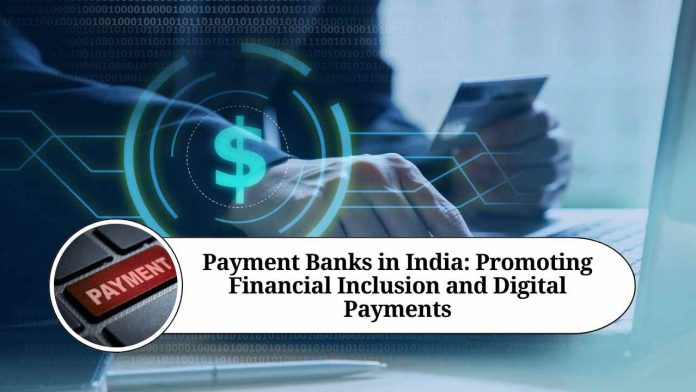Payment Banks in India: Everything You Need to Know
In recent years, the Indian banking industry has undergone a significant transformation with the introduction of Payment Banks. These banks offer various services such as opening savings accounts, money transfers, bill payments, and other financial services to the unbanked and under-banked population of India. In this blog post, we’ll discuss everything you need to know about Payment Banks in India.
What are Payment Banks?
Payment Banks are a new category of banks in India, authorized by the Reserve Bank of India (RBI) to provide basic banking services. These banks can accept deposits and issue debit cards, but they cannot provide credit facilities such as loans or credit cards. Payment Banks can also offer remittance services, mobile banking, net banking, and other financial services to their customers.
Who can set up a Payment Bank in India?
As per the RBI guidelines, Payment Banks can be set up by individuals, companies, or entities registered in India. The minimum paid-up capital requirement to start a Payment Bank is Rs. 100 crore, and the promoter’s minimum initial contribution should be at least 40% of the paid-up capital. The promoters of a Payment Bank can be a non-bank entity, such as a telecom company or a retail chain, along with a bank or a financial institution.
What are the services offered by Payment Banks?
Payment Banks can offer various financial services to their customers, including:
- Savings Account: Payment Banks can open savings accounts for their customers, with a maximum balance of Rs. 1 lakh per account.
- Money Transfer: Payment Banks can offer domestic money transfer services, including remittances and fund transfers.
- Bill Payments: Payment Banks can provide bill payment services, such as utility bills, mobile recharge, and DTH recharge.
- Debit Cards: Payment Banks can issue debit cards that can be used for cash withdrawals and online transactions.
- Mobile Banking: Payment Banks can offer mobile banking services that allow customers to check their account balance, transfer funds, and pay bills.
What are the benefits of Payment Banks?
Payment Banks offer numerous benefits to their customers, including:
- Financial Inclusion: Payment Banks aim to provide basic banking services to the unbanked and under-banked population of India.
- Easy Accessibility: Payment Banks can reach remote and rural areas where traditional banks have limited reach.
- Low Cost: Payment Banks offer low-cost services, including account opening and transactions, making banking affordable for all.
- Digital Payments: Payment Banks promote digital payments, which contribute to the government’s vision of a cashless economy.
How do Payment Banks differ from Traditional Banks?
Payment Banks are different from traditional banks in various ways, including:
- Credit Facilities: Traditional banks can provide credit facilities such as loans and credit cards, while Payment Banks cannot offer such services.
- Deposit Limits: Payment Banks have a maximum deposit limit of Rs. 1 lakh per account, while traditional banks do not have any such restrictions.
- Branch Network: Traditional banks have a wide branch network, while Payment Banks have limited branches and rely on technology and digital channels to provide services.
- Promoter Entities: Payment Banks can be promoted by non-bank entities such as telecom companies or retail chains, while traditional banks are usually promoted by banks or financial institutions.
- Regulatory Requirements: Payment Banks are subject to different regulatory requirements than traditional banks.
What are the challenges faced by Payment Banks?
Payment Banks face various challenges in their operations, including:
- Limited Services: Payment Banks can only offer basic banking services, which limits their revenue-generating potential.
- Low-Interest Rates: Payment Banks offer low-interest rates on savings accounts, which makes it challenging to attract customers and generate profits.
- Network Infrastructure: Payment Banks need to invest in network infrastructure, technology, and digital channels to provide services to customers, which can be expensive.
- Competition: Payment Banks face competition from traditional banks and other fintech players, which can affect their customer acquisition and retention.
- Regulations: Payment Banks are subject to different regulatory requirements, which can be challenging to comply with and may affect their operations.
Conclusion
Payment Banks have emerged as a new category of banks in India, offering basic banking services to the unbanked and under-banked population of India. These banks are promoting financial inclusion, digital payments, and making banking accessible and affordable for all. However, Payment Banks face various challenges in their operations, which need to be addressed to ensure their sustainability and growth in the long run.
Read more useful content:
Frequently Asked Questions (FAQs)
- What is a Payment Bank?
A Payment Bank is a new category of banks in India authorized by the Reserve Bank of India (RBI) to provide basic banking services such as savings accounts, remittances, mobile banking, and bill payments to the unbanked and under-banked population of India.
- Who can set up a Payment Bank in India?
Individuals, companies, or entities registered in India can set up a Payment Bank in India. The minimum paid-up capital requirement to start a Payment Bank is Rs. 100 crore.
- What are the services offered by Payment Banks?
Payment Banks can offer various financial services to their customers, including savings accounts, money transfer, bill payments, debit cards, and mobile banking.
- What is the maximum balance limit in a Payment Bank savings account?
The maximum balance limit in a Payment Bank savings account is Rs. 1 lakh per account.
- Can Payment Banks provide credit facilities such as loans and credit cards?
No, Payment Banks cannot provide credit facilities such as loans and credit cards. They are authorized to offer only basic banking services.
- Can non-bank entities promote Payment Banks?
Yes, non-bank entities such as telecom companies or retail chains can promote Payment Banks along with a bank or financial institution.
- What are the benefits of Payment Banks?
Payment Banks promote financial inclusion, easy accessibility, low cost, and digital payments, making banking accessible and affordable for all.
- What are the challenges faced by Payment Banks?
Payment Banks face challenges such as limited services, low-interest rates, network infrastructure, competition, and regulatory requirements.
- How are Payment Banks different from Traditional Banks?
Payment Banks differ from traditional banks in terms of credit facilities, deposit limits, branch network, promoter entities, and regulatory requirements.
- How can I open a savings account with a Payment Bank?
To open a savings account with a Payment Bank, you need to visit their website or mobile app and complete the account opening process, which includes KYC verification. You can also visit their branches or customer service centers for assistance.




















